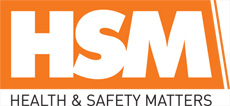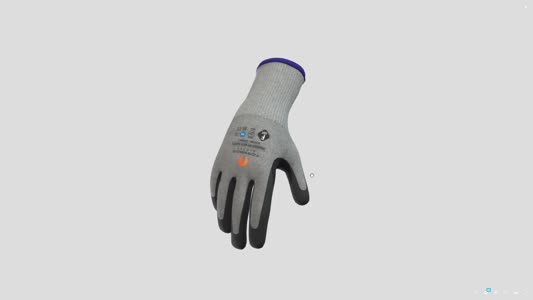
 |
Mark Sennett
Managing Editor |
 |
Kelly Rose
Editor |
Ergonomics in practice at A+A
05 September 2013
With around 1,600 exhibitors, the A+A in Düsseldorf is an important specialist trade fair and congress for health and safety at work. From 5 – 8 November of this year, it will be the ideal place to receive hands-on information as well as to experience and become familiar with concepts and solutions for safe and “people-friendly” workplace design.
Personal safety, security and health at work are considered the "classical” core topics at the A+A, which takes place every two years. With it, the "health-promoting workplace design” will be multifariously examined from various perspectives at the trade fair and congress situated in the fairground halls and Düsseldorf Congress Center (CCD). With regard to this, "people-friendly” working conditions play a significant role.
Ergonomic workplace design is of great significance, especially with regard to the demographic change and increasing number of psychological illnesses. This is because sustainable company success can only be achieved with members of staff that are healthy, both physically and psychologically.
Ergonomics at the A+A Congress
Again this year, the A+A Congress will deal with this subject extensively. The part of the congress programme, "Prevention of Occupational Musculoskeletal Strains", managed by the Commission for Occupational Safety and Safety Engineering of the Federal States (LASI), introduces the topic both in a general and comprehensive manner, making light of the campaign "Think of Me, Your Back" brought to you by the German Social Accident Insurance (DGUV). Professor Dr. Dietrich Grönemeyer will talk about prevention measures in his presentation, "Prevention – Instead of Writhing in Pain".
Two large parts of the congress programme, which are lead by the Society for Ergonomics and Work Science (GfA) and the Commission for Occupational Health and Safety and Standardization (KAN), examine the aspects of "Measurement of the Human Body – New Techniques Facilitate Ergonomic Design” and "Working Hours and Work Organisation”. The second part of the programme comprises the following presentations:
• "Health Protection Whilst Always Being Available" by Frank Brenscheidt (Federal Agency for Industrial Safety and Occupational Medicine, BAuA)
• "Good Arrangement of Working Time in Hotels and the Catering Industry is Manageable" by Reinhild Müller (City of Hamburg, Office for Health and Consumer Protection)
• "Labour Management Consulting with Regard to Working Time for Small and Medium-sized Companies - an introduction to the prevention of sickness and accidents at the workplace!" by Gabriele Gusia (RKW Competence Centre, The German Productivity and Innovation Centre)
With a special look at office ergonomics, the presentations deal with "Good Office Work: Health, ergonomics and personnel development” by the German Network Office (DNB) and "Movement in the Office – Rethinking Ergonomics" by Professor Dr. Ingo Froböse from the Centre of Health of the German Sports Academy of Cologne and Brukhard Remmers from the office furniture manufacturer, Wilkhahn. The physiological stress of information services will be focused upon by Dr. Wilhelm Bauer from the Fraunhofer Institute of Labour Economics and Organisation (IAO) and Susanne Roscher from the German Administrative Professional Association (VBG). Bernd Fels, from the consultation and planning company If5, will concentrate on "Acoustics, Optics, Climate - Office Design Comprising All the Senses".
The subject of ergonomics in child care is dealt with in the presentations, "Technical Measurement Analysis of Muscle And Skeletal Strains of Female Childcare Workers in Day Care Facilities within the Scope of the Ergokita Project" by Rolf Ellegast, Institute for Occupational Health (IFA) of the DGUV and "Educational Staff in Child Day Care Facilities: Strains and Pressure Experienced During Daily Working Routine and Their Effects – Results of a Survey" by Andrea Sinn-Behrendt from the Institute for Ergonomics at the University of Darmstadt.
Ergonomics in the working world will also be present as part of the 2013 A+A international programme, for example, as part of the congress in "Working Conditions in Logistics and in the Transport Industry". This subject deals with the design of healthy working conditions for employees in the fields of logistics and transport and, at the same time, it deals with the opportunities and possibilities available for companies to stay competitive whilst maintaining "people-friendly” working conditions. During the event, an introduction to the new challenges surrounding the transport sector are going to be made, presenting various approaches practised in Europe as their solution. In addition, there will be discussion of practical examples and innovative approaches.
Theme park WorkplaceDesign in Hall 10
Irrespective to whether the subject being dealt with comprises overwhelming work loads, high-stress communication due to too many emails, constant availability, lack of recognition, bad teamwork, or a workplace that is not suitable for the activity at hand, - here, correct leadership is required and a suitably adapted workplace design and work organisation. The 2013 A+A will not only focus on the subject of how workplace design and work organisation can be implemented within companies within the scope of the congress, but also by means of the product range offered by the exhibitors themselves (e.g. ergonomic furniture) and – with a special focus on the topic – through the theme park WorkplaceDesign located in Hall 10 (organised along with cooperation between Dr. Curt Haefner-Verlag, the ergonomic institutes of the universities and the Deutschen Netzwerk Büro, among others). Here, suitably adjacent to Corporate Health Plaza (with a range of offerings by exhibitors in the field of health at work), exemplary solutions with regard to ergonomic workplace design for various branches and stress profiles are shown in an area comprising around 400 square metres.
Specifically, the trade visitor will be offered seven best practice scenarios:
- Packing station and production / assembly workplace
- Ergonomic office according to the "Ergonomic Workspace Performance Institute”
- Planning of production workplaces (Modelling of workstations using "Cardboard Engineering”
- Office workplace "Sitting in Motion”
- "Feel-Good Office”
- Working at computer workstations
- Ergonomics at production workstations
A forum integrated into the theme park, with its lectures, presentations and discussions, also gives insight into best practices and the scientific status quo. Scientific support will be provided for the programme by Professor Dr. Ing. Martin Schmauder and Dr. Martin Braun from the Fraunhofer IAO Institute. The exhibitors participating in the theme park, WorkplaceDesign, will include consultation service providers as well as suppliers of ergonomic work tools, furniture and equipment (Günzburger Steigtechnik, Löffler, Wilkahn, Zeuge Sonnenschutz, among others). Activities such as the assembly of a pocket tool (that can naturally be taken home with you) allow ergonomics, specifically in the case of production, to be directly experienced.
Good office work
Strain caused by working in an office has been receiving a high level of recognition in recent discussion. Although they had not been noticed until recently by the public eye, stress and physiological strain have become a great issue due to the daily flood of information, among other things. In the process, it is often just as frequently pointed out that especially process design, management and work culture play a significant role in prevention. There is also strong public perception of classical themes, such as acoustics, optics, climate and the ergonomic design of the work atmosphere, especially with regard to modern public office areas.
At the congress and during the trade fair, the 2013 A+A is taking up these topics for the visitors (the A+A 2011 had more than 60,000 trade visitors) with the above-named range of offerings. Ergonomics portrayed in its various forms will be the subject of focus. What exactly does this term mean? And what does it mean for the economy?
Ergonomics in a company
"Ergonomics, described simply, comprise the teaching of how to tailor technology to suit the nature of human beings. Through the use of ergonomics knowledge in designing workplaces and entire work systems, higher work performance with an optimal utilisation of human resources can be achieved,” explained Professor Dr. Ing. Martin Schmauder, professor of ergonomics at the Institute for Technical Logistics and Work Systems at the TU Dresden (technical university).
Ergonomics increases the productivity of a company. A glance at the statutory health insurance companies’ reports of sickness figures proves this. According to them, one in four workers is absent due to illnesses of the muscular-skeletal system. According to estimates by the Federal Agency for Industrial Safety (BAuA), these illnesses cause losses of production amounting to 8.5 billion euros.
Therefore, ergonomic workplace design contributes to employees including their important specialist knowledge being available to the company for the longest amount of time possible. Furthermore, an attractive workplace keeps specialised personnel from looking around for other employers – an important factor in the course of the demographic change at hand and the lack of specialised personnel arising from it. It is also essential for the company to obtain fresh and innovative knowledge. In the meantime, in more and more branches, young talents are being imploringly searched for. They are able to pick and choose the most attractive employers. Here, healthy working conditions are a decisive factor.
Ergonomics and health at work
In addition to the economic utility to the company, ergonomically designed surroundings also accommodate occupational health and safety requirements. In this way, ergonomics is listed in art. 2 of the German Occupational Safety and Health Act (ArbSchG) as a health and safety measure, providing an important contribution to the improvement of the health and safety of members of staff. It is also present in the Occupational Safety Act (ASiG). There, a detailed definition of the duties of specialist occupational safety personnel states that the employer is to be provided consultation with regard to workplace design, operational procedures, the working environment, and other questions concerning ergonomics. Therefore, for the specialist personnel for occupational safety, ergonomics is part of the safety-related expertise and part of their duty in the company.
Information on the 2013 A+A, exhibitors, products and programme overviews are available online at: http://www.AplusA.de























